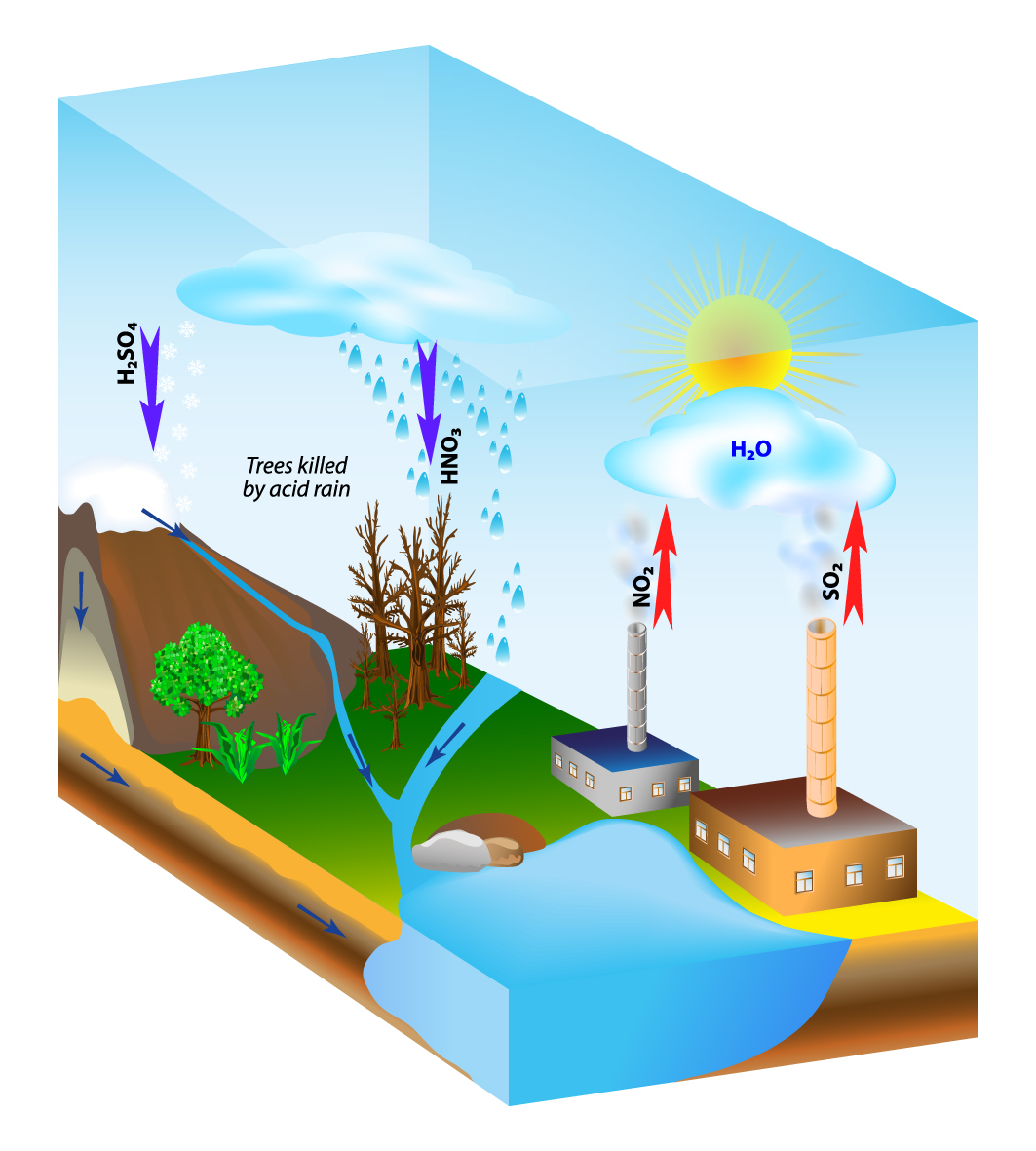Harms of the Polluted Environment are explained below:
For the survival of humans, requirements are air, water, food, shelter, forests, energy .
Harmful Effects
(i) Air:
Air quality is deteriorating day by day. Outdoor air pollution, whether in the form of visible haze or invisible ozone, and carbon monoxide, is a problem for nearly every country in the world.
ADVERTISEMENTS:
Current emission of carbon dioxide is about 30 billion metric tons per year. It is expected to increase to around 60 billion metric tons per year by the middle of the century. In order to achieve climate stabilization, an emission reduction target of 50% to 100% by 2050 is needed from today’s levels.
Indoor air pollution is the second leading environmental health threat in the world. It causes 1.6 million premature deaths every year and afflicts nearly half of the world’s population, predominantly the rural poor. Indoor air pollution lies in poor ventilation systems and accumulations of all sorts of contaminants and toxic substances in the air.
(ii) Water:
Without clean and usable water, nothing is able to survive. Global water consumption increased six fold in the last century-more than twice the rate of population growth. Yet readily available fresh water is a finite resource. Moreover, water and populations are unevenly distributed across the globe. Arid and semi- arid regions receive only two percent of all surface run off yet account for 40% of the global land area and about 50% of world’s poor live there.
ADVERTISEMENTS:
The existing freshwater resources are under heavy threat from overexploitation, pollution and climate change. There are 74 different kinds of pesticides which have been found in ground water, which is used today as potential drinking water. Given these trends,
Equitably providing adequate water resources for agriculture, industry and human consumption poses one of the biggest challenges of the 21st century.
(iii) Food:
The United Nations estimates that agricultural output will have to rise 50% by 2030 to meet the increasing demand for food, because of
(a) Continued increase in the world’s population.
ADVERTISEMENTS:
(b) Increased wealth generation from economic development.
(c) Production of biofuels from food crops like corn and sugarcane.
We have observed record setting harvests over the last few years, and yet chronic hunger persists and has recently been increasing.
(iv) Shelter:
Cities are home to half of the world’s people. They are the hotspots of consumption, production, and waste generation.
However, 50% of world’s people are poor facing hunger, illness, etc. Thus sustainable development needs to be the focus area. It supports the concept of lifting populations out of poverty without endangering resources and the environment for future generations. At present, poor populations are suffering from the effects of unsustainable energy use such as adverse health impacts, deforestation, climate change and desertification.
(v) Forests:
Forests contain 70% of the world’s biodiversity, provide vital ecosystem services such as soil protection and flood control, and support the subsistence livelihoods of up to 300 million poor people.
Between 2000 and 2005, roughly 13 million hectares of forest disappeared each year, mainly from the biologically rich tropical forests of the developing world. The intergovernmental panel on climate change estimated that deforestation contributes 15-20 percent of global greenhouse gas emissions in 2007.
(vi) Energy:
On a yearly basis, just in the United States, power plants (that generate the electricity), causes 3500 lung cancer cases and over 35000 heart attacks. The situation is worse in under-developed or poor countries where the industrial and the private sectors do not follow consistent environment protection guidelines.

